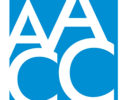Mapping a future
By AACC 21st Century Center Staff
September 3, 2020
In California, pathways for students become even clearer with program mapping.
Community colleges have been creating, adapting and using Guided Pathways models for several years to help students navigate college. In California, program maps are giving students a semester-by-semester path from program entry to completion. They also help faculty and staff with the task of clarifying complex catalog and transfer information.
A few years ago, Bakersfield College, in partnership with California State University Bakersfield and Concentric Sky, developed the program mapper model. The planning tool was designed to help students navigate a program of study from Bakersfield College to CSU Bakersfield and serve as a prototype for the CSU system.
Students can now browse information on occupations and careers commonly associated with each program on an easy-to-navigate website. They also can see typical wages and the labor market demand for California.
In 2018, the mapper model expanded beyond Bakersfield College when a few other California colleges were chosen to pilot the program. Now, there are 33 colleges that have signed up to be part of the Program Mapper Project. The third wave of colleges recently went live with the program.
Laney College is part of that third statewide cohort of colleges to implement the project. The college will be unveiling several new efforts this fall that will improve the student experience, streamlining communication and ensuring a pathway to success is clear and attainable. All of these new efforts are rooted in student voices, according to a release from the college.
Students at Laney will now access 75 new pathway maps on the college’s redesigned, student-centered website that aligns with the college’s slogan: “Dream. Flourish. Succeed.” In addition to the pathway maps, the college has created eight Areas of Interest to help students make connections between their educational goals and their passion.
“We asked, and they told us,” said Eleni Gastis, the college’s Guided Pathways co-coordinator and journalism department chair. “We knew that any changes at our institution had to come from student voices and needed to align with barriers they were facing.”
Work for the college’s Guided Pathways initiative began in January 2017 with an inquiry into the needs of six distinct student groups: Pell grant recipients, part-time students, full-time students, undeclared students, first-year students and age 25+ students. With the help of focus groups, student surveys and word-on-the-quad videos, students pointed out that they needed easier ways to learn about more than 130 programs at the college. Laney students said the traditional resource guide that lists programs, degrees and certificates – the college catalogue – was difficult to understand, was overwhelming and not student-centered.
“It became clear to us that we had to rethink how we were delivering information. When we played the video of students telling us this, our campus community was a bit shocked,” said Suzan Tiemroth-Zavala, Guided Pathways co-coordinator and ESOL faculty member.
This fall, the college’s Areas of Interest will be targeted through a campus-wide awareness project and student-centered marketing campaign boosted by Instagram.
The effort will lead students back to the college’s upgraded website, the new program maps and more intentional career exploration. Next up: college leadership will explore support services around these programs more intentionally.
How has your college built pathways for students? Sound off at LinkedIn.



